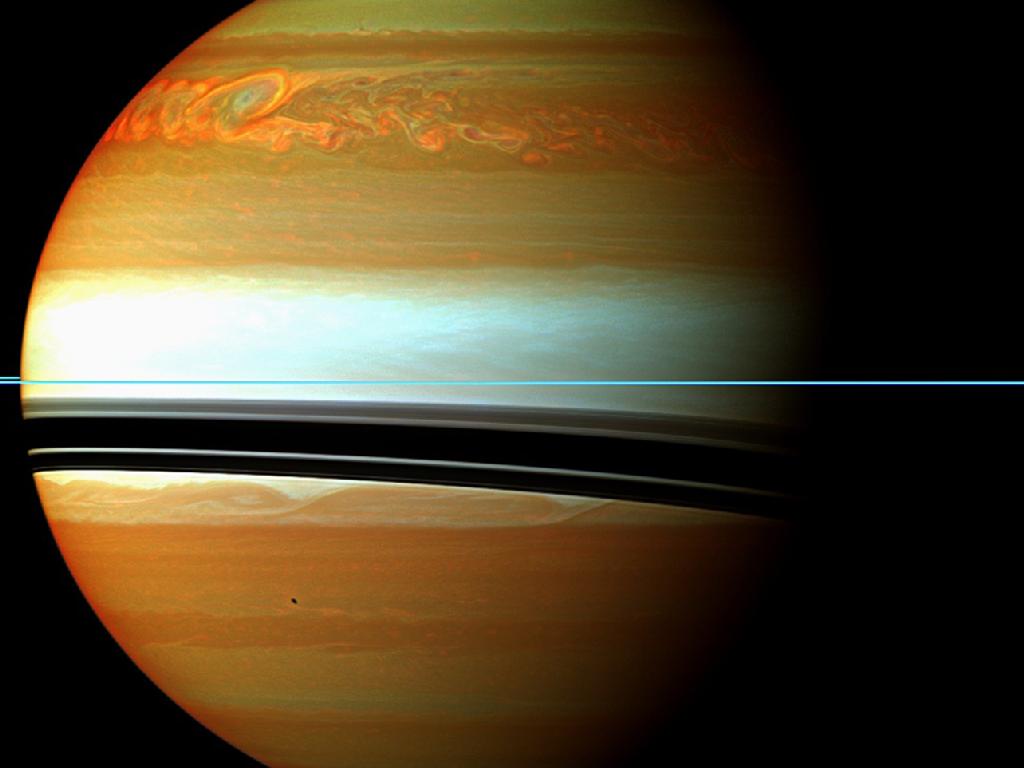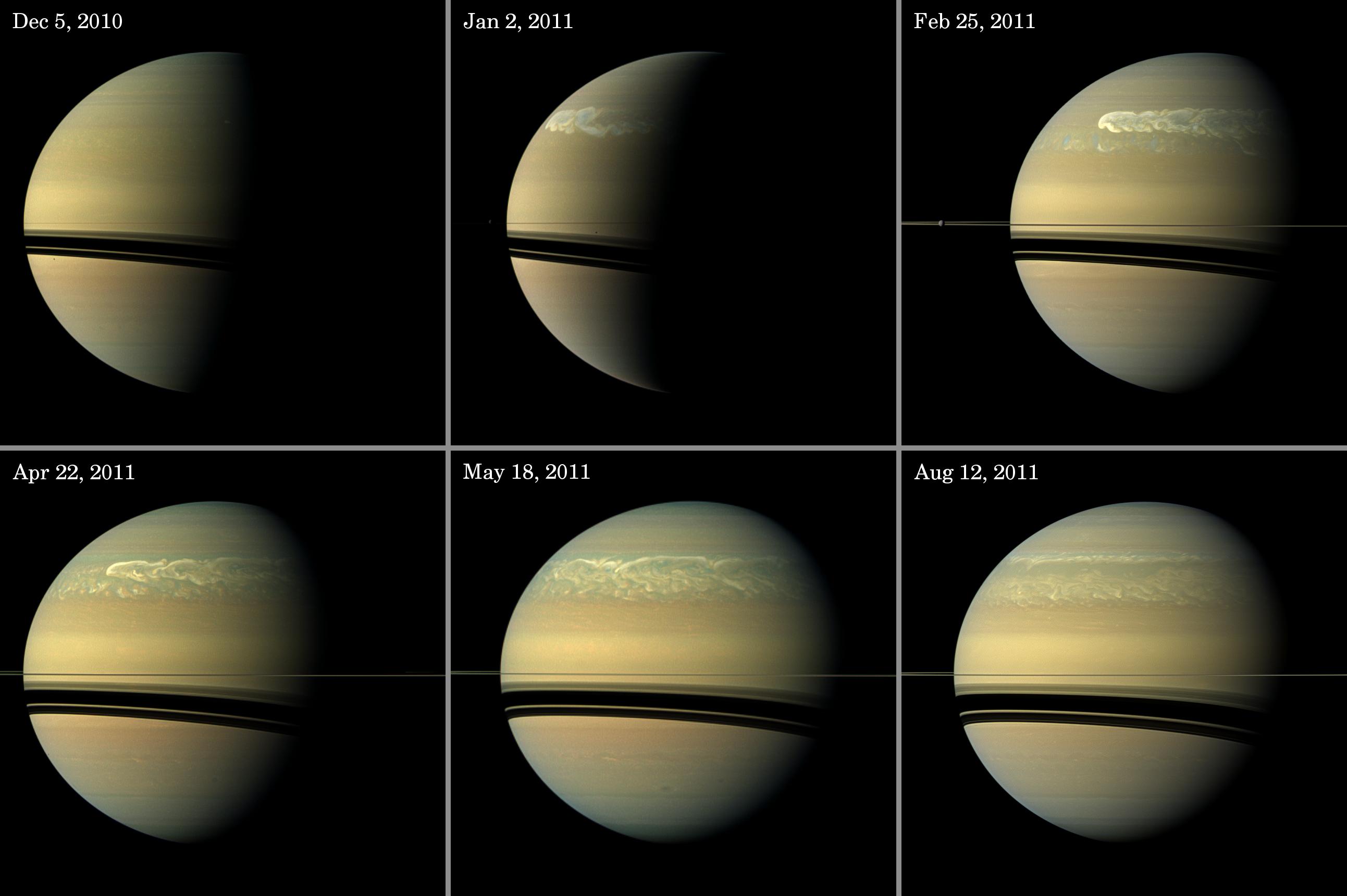Spectacular Photos of Monster Saturn Storm Snapped by NASA Spacecraft

A NASA spacecraft has chronicled the birth, evolution and death of the biggest storm to hit Saturn in two decades.
The monster storm on Saturn emerged in the ringed planet's northern hemisphere on Dec. 5, 2010. It started out as a tiny spot but grew rapidly, completely encircling the planet by late January 2011. It eventually extended about 9,000 miles (15,000 kilometers) from north to south before sputtering out in late June.
The storm's 200-day active period makes it the longest-lived planet-encircling tempest ever observed on Saturn, researchers said. And NASA's unmanned Cassini probe watched everything unfold, snapping pictures all the while.

Saturn's Great White Spots
Such monster storms, known as Great White Spots, tend to pop up every two to three decades on the ringed planet, for reasons that remain mysterious. [Gallery: Saturn's Monster Storm]
"The Saturn storm is more like a volcano than a terrestrial weather system," said Andrew Ingersoll, a Cassini imaging team member at Caltech in Pasadena, in a statement. "The pressure builds up for many years before the storm erupts. The mystery is that there's no rock to resist the pressure — to delay the eruption for so many years."
A tempest of similar size was last seen on Saturn in 1990. But it lasted just 55 days before petering out, suggesting that the most recent storm was something special.
Sign up for the Live Science daily newsletter now
Get the world’s most fascinating discoveries delivered straight to your inbox.
"This new storm is a completely different kind of beast compared to anything we saw on Saturn previously with Cassini," said UCLA's Kunio Sayanagi, a Cassini imaging team associate. "The fact that such outbursts are episodic and keep happening on Saturn every 20 to 30 years or so is telling us something about deep inside the planet, but we have yet to figure out what it is."
Watching the storm unfold
Cassini snapped hundreds of images of the new storm, sneaking quick looks when it wasn't performing other scheduled observations of Saturn, its rings or its moons. These images allowed scientists to track the storm's progress in great detail.
The maelstrom first appeared at about 35 degrees north latitude and eventually wrapped around the entire planet, covering approximately 2 billion square miles (5 billion square km). It was a single thunderstorm that raged continuously for more than 200 days, affecting nearly 20 percent of Saturn's northern hemisphere, researchers said.
The storm's active phase is over, they added, but some of the clouds it created still linger in the planet's atmosphere today.
Cassini arrived at Saturn in 2004 and is slated to keep studying the ringed planet and its many moons through 2017. So the spacecraft may well spot some other exciting atmospheric goings-on before it's done.
"It is the capability of being in orbit and able to turn a scrutinizing eye wherever it is needed that has allowed us to monitor this extraordinary phenomenon," said Carolyn Porco, Cassini imaging team leader at the Space Science Institute in Boulder, Colo. "Seven years of taking advantage of such opportunities have already made Cassini one of the most scientifically productive planetary missions ever flown."
This story was provided by SPACE.com, a sister site to LiveScience. Follow SPACE.com for the latest in space science and exploration news on Twitter @Spacedotcom and on Facebook.











